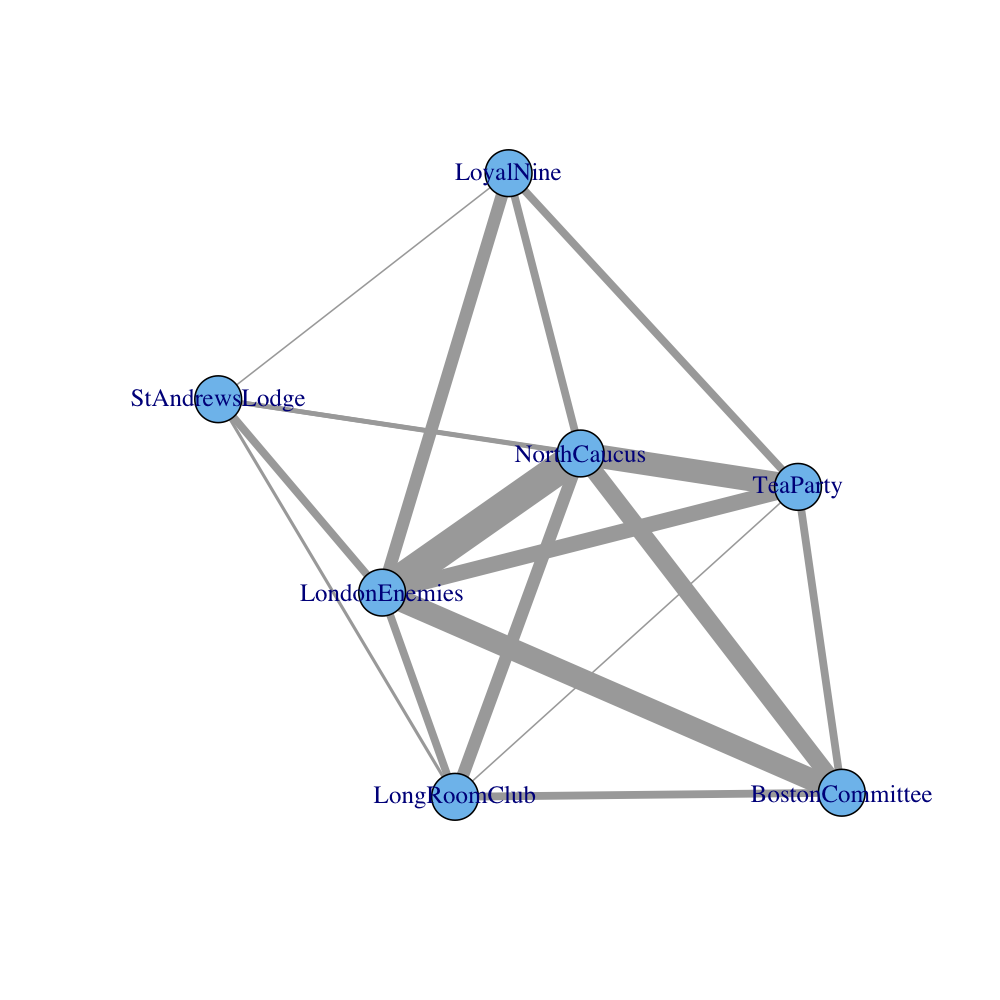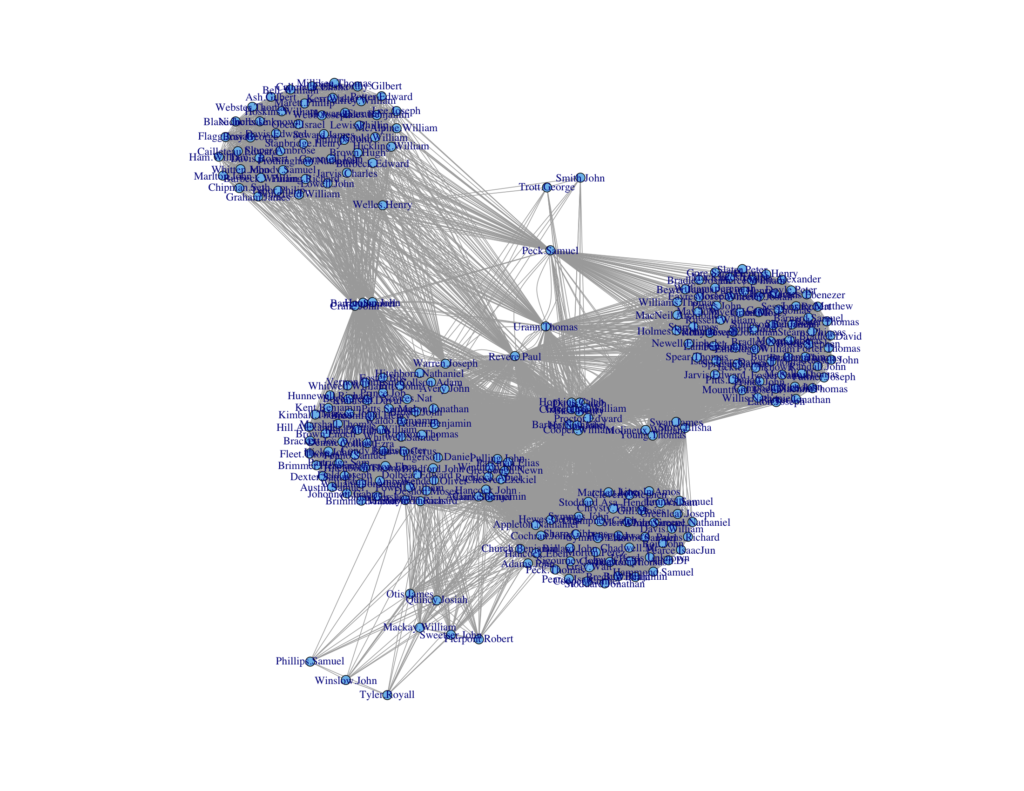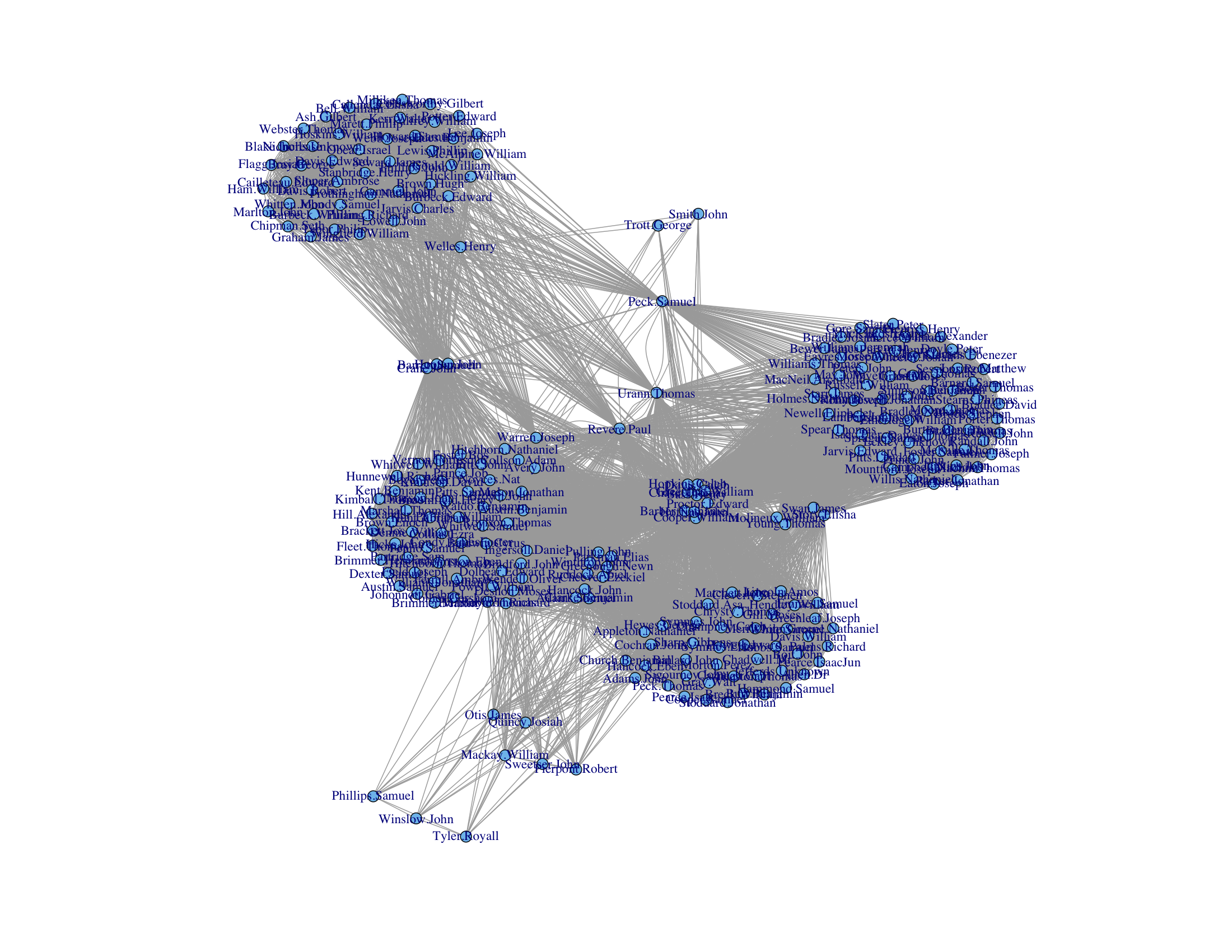In Using Metadata to Find Paul Revere, Kieran Healy gives a very clear and insightful look into networks and the ways they can be used to glean important information. Healy shows that the same network data can be used in multiple ways, such as connecting individuals to organizations they belong, where individuals and organizations make up the vertices in a bimodal network with organization membership being the directed edges. This data can also be used to link groups to groups as the vertices, with their edges being thicker the more shared members they have, allowing us to see which groups may point to membership in another group. It could also be used to link individuals with other individuals as the vertices, with their edges representing individual connections.

Group Connections 
Individual Connections
All of these networks give us valuable information about which groups and individuals may have been central to identifying which people belonged to particular groups in the Colonies, and which groups may have been more interconnected than others. This in turn allows for us to find people who might have been more involved in these groups than others, such as Paul Revere (seen nearly in the middle of the Individual Connections network above).
This project in particular is very interesting because it relies on historical accounts to identify these connections, likely involving text and other document mining. This is a great example of the power of DH because we are now able to view crucial historical events and movements in an easy to understand and visual way, especially in comparison to combing through historical texts to try to glean information about these connections. This data in turn can be used as a way to identify which figures or groups we may want to research more, and which may not have played as large or important a role in this particular historical context.

Henrie, this post is really interesting! I found the idea of making edges thicker the more shared members the groups have fascinating. It also makes it easier to find what you are looking for.
Henrie, this is a fascinating website. Like Luisa, I like how Healy uses thicker edges to connect nodes, as it makes it easier to identify relationships. I like the idea of using networking to find groups to research more. Many current or more recent events could benefit from network analysis to find lesser-known people. I look forward to more usages of this technology.